CUTE
2024
Day(s)
:
Hour(s)
:
Minute(s)
:
Second(s)
Event Schedule
Monday
14.10.24
Tuesday
15.10.24
Conference day, scientific sessions
Wednesday
16.10.24
Conference day, scientific sessions
Gala dinner & concert
Thursday
17.10.24
Committees meetings & participants departure
Keynote Lectures
Title:
Building the future: Concrete’s role in renewable energy storage
To expedite the urgent transition from a fossil fuel-based economy to one based on renewables, a scalable energy storage solution has been introduced in the form of multifunctional concrete utilizing inexpensive and widely available nano carbon black. By employing a combination of correlative SEM/EDS-Raman spectroscopy alongside capacitance measurements, this study demonstrates that the incorporation of a hydrophobic carbon phase into hydrophilic cement produces a high surface area electron-conducting carbon network within the porous cement matrix, thereby creating a functional supercapacitor. This innovative technology holds the potential to underpin cost-effective systems for storing renewable energy from sources such as solar, tidal, or wind power, while simultaneously replacing CO2-intensive battery technologies.

Damian Stefaniuk, Ph.D., Massachusetts Institute of Technology, USA
Damian Stefaniuk serves as a Research Scientist within the Massachusetts Institute of Technology (MIT) Department of Civil and Environmental Engineering, the MIT Concrete Sustainability Hub (CSHub), and the MIT Electron-conductive Cement-based Materials Hub (EC3 Hub). In his research he focuses on science-enabled engineering of sustainable cement-based materials, with applications ranging from designing corrosion-resistant prestressed bridge structures to exploring chemically induced pre-cure carbonation for carbon storage and developing electron-conductive concrete for renewable energy storage. The overall goal of his research is to make civil engineering infrastructure part of the solution of the urgently needed energy transition while mitigating greenhouse gas emissions associated with cement production.
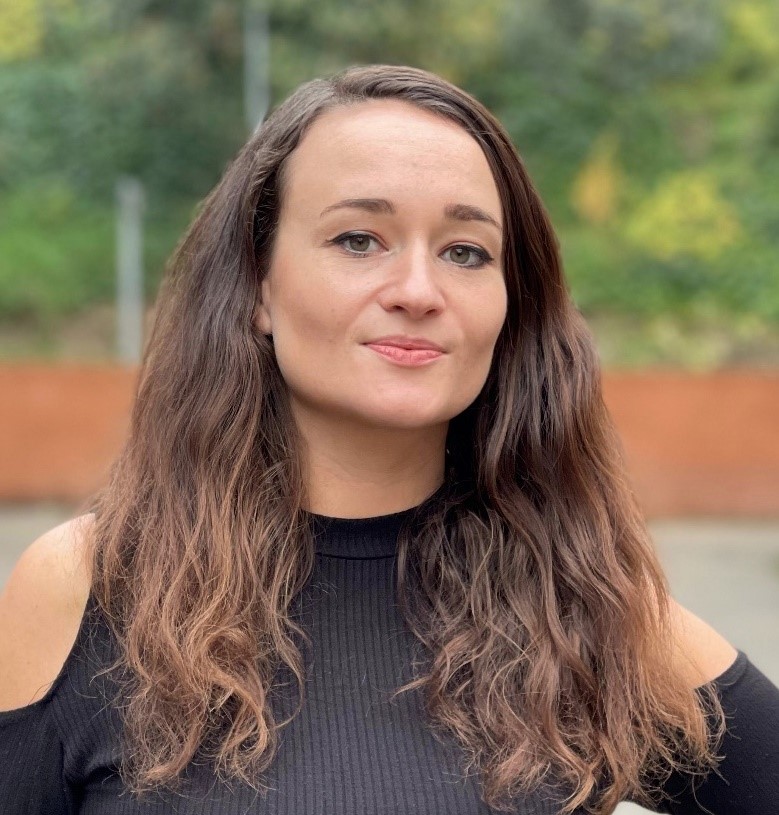
Aleksandra Królicka, PhD, Wrocław University of Science and Technology, Poland
Aleksandra Królicka isan assistant professor in the Department of Metal Forming, Welding, and Metrology at the Wrocław University of Technology in Poland. Her Ph.D. thesis covered the welding processes of bainitic steels with particular emphasis on characterizing the welded joints structure. Currently, she is the principal investigator of two research projects covering the issues of in-use properties and thermal stability of bainitic steels (“The concept of high-strength, thermal stable nanostructured bainitic steel with increased weldability” Project: 2020/37/N/ST8/03324, National Science Centre Poland and “Modeling of the multi-phase structure of nanostructured bainitic steels focused on improving their technological properties” The Bekker Programme, Polish National Agency for Academic Exchange). In her projects, she focused on developing new grades of bainitic steels with enhanced thermal stability. Its strategy considers both the approach of designing the chemical composition, heat treatment processes, and the synergistic effect of strengthening mechanisms. Her research field of interest includes nanocrystalline bainitic steels, advanced multi-phase steels, and electron microscopy methods for engineering materials characterization.
Title:
Enhancing the life cycle of railway tracks: the influence of microstructure on the fatigue, fracture and wear behavior of bainitic rails
In 2022 global CO2 emissions from the transport sector grew by more than 250 Mt CO2 to nearly 8 Gt CO2, 3% more than in 2021. When considering CO2 emissions, railways are considered an ecological way of transporting people and products, which is reflected in the number of investments in the EU market in this field. The European Union’s Sustainable and Smart Mobility Strategy predicts that by 2030, both high-speed rail traffic and freight traffic will increase by 50%, on the other hand, by 2050, high-speed rail traffic is expected to increase by 300%, and freight traffic by 100%. There is no doubt that the steel sector and railway infrastructure are directly interdependent. The railway sector also uses large amounts of steel and is one of the major recipients of steel-making companies. Moreover, the steel industry alone is responsible for 25% of industrial CO2 emissions, which proves that the problem of carbon footprint in the steel sector plays a crucial role. Therefore, extending the life cycle of rails through the use of novel steel grades will contribute to reducing the carbon footprint associated with steel-making processes. The factors determining the durability and life cycle of rails are their fatigue and fracture performance. Another factor influencing the life cycle is the intensity of wear and the accompanying wear mechanisms. The influence of multi-phase structure on fracture toughness and fatigue crack growth rate will be presented. The main microstructure factors influencing cracking processes will also be indicated. Finally, the analysis of the bainitic rail subjected to 5 years of operation in heavy-loaded freight tracks will be introduced. The prospect of using novel steel grades constitutes a promising direction for designing high-performance railway tracks subject to heavy loads during operation (i.e. high-speed trains and heavy-load tracks).
Title:
Concretes for sustainable transportation infrastructure – north European approach
construction, concrete is perceived as responsible for significant CO2 emissions and having problems with a long-term durability. Northern Europe with its long and snowy winter adds even more demands on this material. The presentation will address these issues and show how the sustainability of transportation infrastructure is enhanced in Scandinavia.
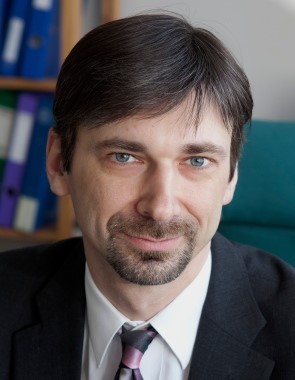
Prof. Andrzej Ćwirzeń, Luleå University of Technology, Sweden
Prof. Andrzej Cwirzen has obtained his master’s degree in civil engineering from the Silesian University of Technology in Poland and his PhD in Concrete Technology from the Helsinki University of Technology in Finland. As an associate professor, he led the Concrete Technology Research Group at Aalto University in Finland. Later, he was appointed as a full professor at the Luleå University of Technology in Sweden and chair of the Structural Engineering Research Group. Since 2019, he is a chaired professor of the Building Materials Research Group at the same university. In parallel to his academic career, Prof. Cwirzen has been working as a consultant and R&D project manager for construction companies and concrete producers in Europe. In his over 20 years of work with concrete technology, he has focused on nanotechnology and nanomaterials, including carbon nanotubes and carbon nanofibers, alternative ecological cementitious binders, high-strength concretes, ultrahigh-performance concretes, durability, and production technology of concrete structures. He is a senior member of RILEM, member of several committees of the Transportation Research Board (TRB) and at the American Nano Society. Prof. Cwirzen holds two patents related to ecological cements. He has been a visiting professor at several universities in Europe, Canada, USA and Australia

Dr. Andrzej Moczko, Wrocław University of Science and Technology, Poland
Dr. Andrzej Moczko is a specialist in Non-Destructive Testing and evaluation of building structures with particular attention to concrete structures. A graduate of the Faculty of Civil Engineering at the Wrocław University of Science and Technology. He has been a research and teaching academic staff member at the Wrocław University of Science and Technology for many years. He holds a Ph.D. degree from the Wrocław University of Science and
Technology, Faculty of Civil Engineering. From 1991-92, he was a research fellow at the Royal Dutch Academy of Sciences, Faculty of Civil Engineering, Delft University of Technology, The Netherlands. In 1994-1995 he completed post-graduate studies at American Business School, Diploma of Central Connecticut State University.
He is an active member of RILEM (International Union of Laboratories and Experts in Construction Materials, Systems and Structures) as a member of several of the Technical Committees of this organization, which work on developing modern NDT techniques. He is also a member of the Polish National Standard Committee for Concrete Assessment and an expert of the European Committee for Standardisation (CEN) for concrete testing.
Dr. Moczko has been a long-time academic lecturer and consultant in numerous research projects concerning the assessment of the technical condition of various types of concrete structures. In addition, he authored several publications on modern NDT systems and their practical application. He collaborates with the American Concrete Institute as a lecturer in the online education program for civil engineers. He is also a member of the NDTitans Group, which is an international group of highly specialized, skilled and dedicated engineers, scientists and companies with many years of structural engineering and testing experience related to all aspects of concrete and reinforced concrete structures.
Title:
The present and future of non-destructive testing in the diagnostics of building
structures – a significant challenge for the development of modern building engineering
Evident dynamic development of building engineering concerns in particular concrete structures. Its structural and economic values are widely known and appreciated. At the same time, concrete is a very "unruly" material that is often the source of many problems, especially in the context of ensuring adequate durability of the structure.
Progress in concrete technology has forced the need for parallel development of advanced diagnostic techniques, which, on the one hand, enable effective quality control of construction works and, on the other hand, enable quick “in-situ” assessment of the actual technical condition of existing structures. It is obvious that progress in the field of non-destructive testing, which minimizes interference with the structural integrity of the structure, is of particular importance here.
The lecture presents an overview of modern advanced NDT methods that are used to assess the actual mechanical and physical properties of concrete, diagnose its potential corrosion hazard, and modern defectoscopy, which allows for insight into the "internal" of the tested structure and its location, as well as identification of various types of internal defects invisible from the outside.
Among others, the essence and diagnostic capabilities of such non-destructive measurement systems as: pull-out, pull-off, Rainbow-Test, Impact-Echo, Impulse-Response, Ground Penetrating Radar, GWT thermal imaging, Air Void Analyzer and Merlin were discussed. The paper also discusses selected modern non-destructive methods used in the diagnosis of historic concrete structures and their conservation. In this respect, a contact-sponge test was presented, which enables the in-situ assessment of concrete resistance to
surface water absorption. The colorimetric method, which allows for the control of changes in the color of the concrete surface perceived by humans after conservation treatments, and the peeling tests, used to assess the adhesion of the applied repair agents, are also discussed.
Title:
A View from the Sea. Research and Planning on Climate Transition in the Italian Upper Adriatic Regions
The Northern Adriatic is a significant context for technologically advanced research ‘by design and planning’ on sea-land interactions, their multiple dimensions and challenges. The forecasts for the coastal territory between the Gulf of Trieste and the Lagoon of Venice (IT) are those of a substantial rise in the average sea level, and of dramatic and multiple impacts on valuable cultural, environmental, and economic assets. Since 2022, the University of Trieste has been developing research and technological transfer on these issues, in collaboration with the Università Iuav di Venezia, and with the financial support of the EU-driven Italian Plan for Recovery and Resilience. The aim is to create an “Interconnected Nord-Est Innovation Ecosystem” (iNEST), including a number of universities, public bodies, and research agencies. Along with activities of citizen engagement and life-long learning, a peculiar feature of iNEST lies in pairing university research with ‘cascade funding’ addressed to local enterprises, with the purpose to provide original contribution in the fields of research and technological innovation for the governance of climate transition in coastal territories that are likely to become ‘amphibious’. Among iNEST’s main expected results there are innovative spatial planning instruments and integrated sea-inner waters-inland mobility solutions, where skills and knowledge belonging to a wide set of disciplines (from biology to urban planning) integrate.
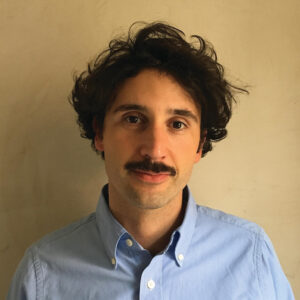
AProf. Ludovico Centis University of Trieste - Italy
Ludovico Centis University of Trieste, Department of Engineering and Architecture, Trieste (IT)
An architect, founder of the architecture and planning office The Empire and co-founder and editor of the architecture magazine San Rocco. He is currently Assistant Professor of Urbanism at the University of Trieste, Italy. His research focuses on how individuals and institutions, as well as desires and power, shape cities and landscapes. Recent books include The Lake of Venice. A scenario for Venice and its lagoon (2022, co-authored with Lorenzo Fabian), They must have enjoyed building here: Reyner Banham and Buffalo (2021) and A parallel of ruins and landscapes (2019).

Prof. Elena Marchigiani University of Trieste - Italy
Elena Marchigiani University of Trieste, Department of Engineering and Architecture, Trieste (IT)
Associate professor in Urban Planning. She develops research and practical experience in spatial planning and urban design, with specific reference to the issues of landscape and sustainability, participatory and inclusive processes, regeneration of social housing districts and climate transition in coastal areas. She currently coordinates national research on these issues and has published a number of books and articles on these topics (https://arts.units.it/simple-
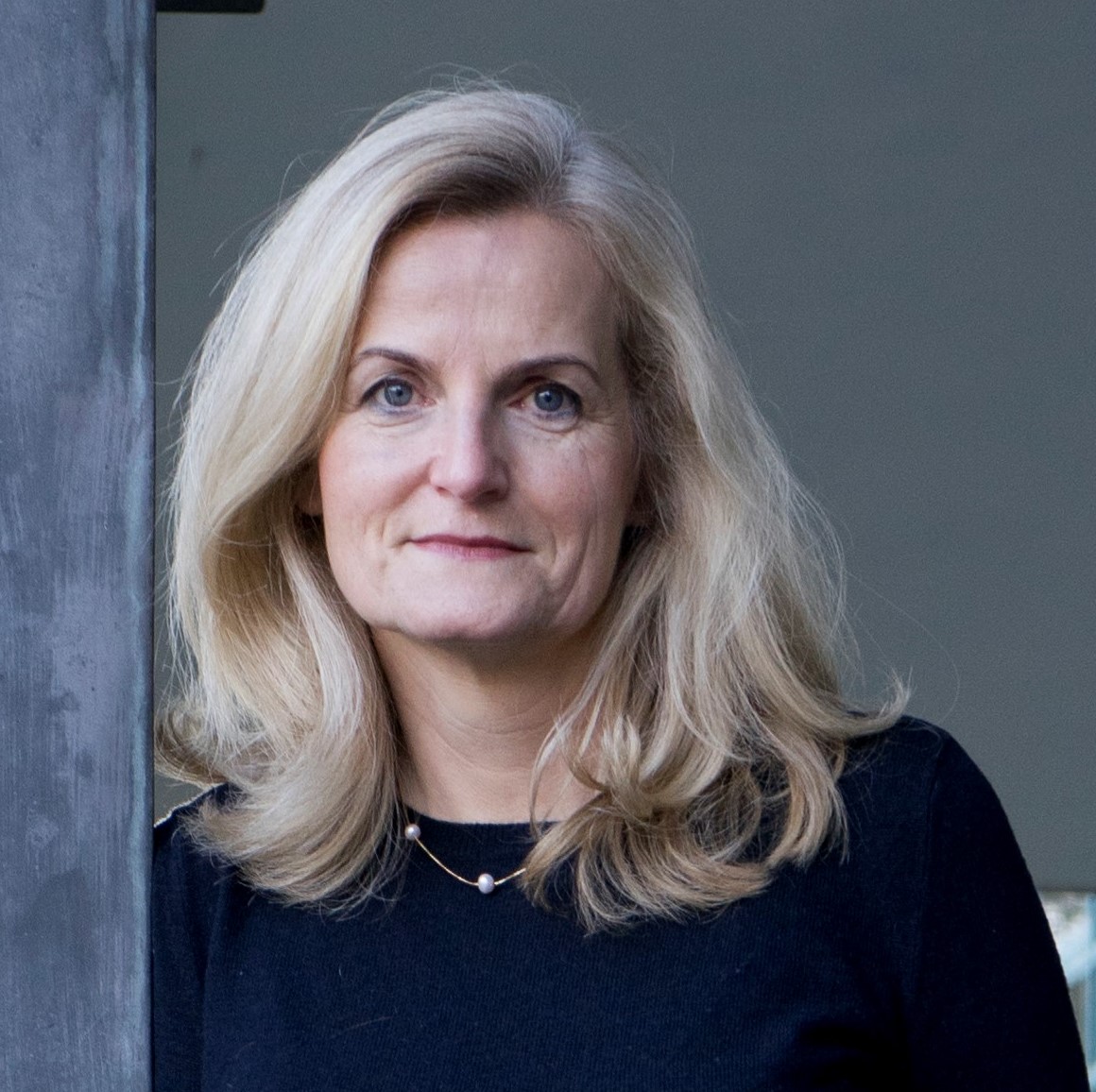
Eva Spackova, Ph.D., VSB Technical University of Ostrava, Czech Republic
Dr. Eva Spackova
Architect, associate professor of architecture at the Department of Architecture, head of the University Museum at VSB ‒ Technical University of Ostrava. Registered architect in the Czech Republic.
She is concerned for the topic of the city in all of its forms with an emphasis on regeneration of the environment and buildings built in the socialist period. Her research interests include the use and creation of participatory planning procedures and publicly engaged design. She participated in the
research project Community-based participatory planning in urban areas as a leader of the VSB-TUO team (2019-2021).
One of the topics of her interest is the public art in architecture and the institution of the university museum including the acquisition, care, and maintenance of objects in the collections, as well as the research opportunities and educational programming that relate to it. Her research project during her nine-month stay in USA (2018-2019) focused on the public art collection at Iowa State University, USA and considered how this case is representative of planning processes for public art in American university buildings and public spaces.
She participates on juries for architectural competitions and works as a member of the municipal commission for building and architecture for the city of Hlucin. She is engaged in various educational and popularising activities in the field of architecture (lectures, workshops, summer schools, urban
games, public walks, community engagement etc.).
Title:
The search for a sustainable city as part of urban planning
City planning has long been based on the notion that success means growth, expansion, enlargement and intensity. Considerations for a paradigm shift towards sustainable development do not only include changes in thinking in an economic sense, but also social values and the protection of natural
wealth. At the same time, sustainable development tries to eliminate or mitigate the negative effects of the current way of urban development. This is directly related to good and effective decision-making and administration of public affairs. This can be achieved through fact-based decision-making
and improving the conditions for public participation. A functional and meaningful social dialogue is an essential part of urban planning.
The lecture will present an example of territorial development in the socialist city of Nová Ostrava (today’s Ostrava-Poruba), founded in the 1950s on a green field that was originally supposed to be the “sector center” of the new city. This area had been planned in detail since the 1960s, but remained undeveloped until 1989. After the change in economic and social conditions, the territory gradually began to develop with the will to fulfill the original plan, but without a corresponding result. Currently, it is only a system of individual buildings with only partial public spaces without connections. All phases of planning from 1951 to the present will be analyzed. For the last part of the
territory, an assignment for an urban study is to be processed, which should combine the requirements of the public and the city management and try to solve this territory in an important location in the center of the city district Poruba. The result of the public discussion is to leave this space empty and create a new city park here. According to the residents of the city, natural space is the most valuable quality in this case. More valuable than buildings that have been planned in this place for a long time without a more detailed determination of what they should be used for.
Title:
Development of Sustainable Sinkhole Research in Australia
Sinkholes are a danger to people in most countries. They can instantly happen and swallow up roads, cars, and even houses, no matter small or big in heavily populated urban areas. The reality is that many sinkholes are actually manmade. Broken water mains, sewage pipes, and drainpipes underneath roads and parking lots are all common sinkhole causes. Data shows sinkhole damage caused in the last 10 years has required an average of $3.0 billion US dollars per year in repairs all over the world. This seminar will discuss the recent development of sustainable sinkhole research in Australia. Topics may include the feasibility of developing a portable drone mounted GPR based experimental study, the advanced numerical simulation of the sinkhole problem, and the development of new sinkhole repair guideline and design options.
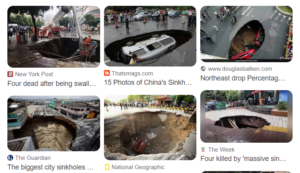

Jim S. Shiau, PhD (Newcastle), Associate Professor, University of Southern Queensland, Australia
Jim Shiau is currently Associate Professor at University of Southern Queensland, Australia. He received a Ph.D. degree from University of Newcastle, NSW, Australia where he continued two years of post-doctorate under the leadership of late Laureate Professor Scott Sloan. His research focuses on deep braced excavation and soft ground tunnelling, sinkhole stability, finite element limit and shakedown analyses for geotechnical stability problems. Jim Shiau has extensive experience in the design of underground structures. He enjoys the breadth of general practice with interests in geotechnical stability research. He has published more than 20 high-impact SCI Q1 journal articles as both first and corresponding authors.
Jim Shiau has also involved in the organisation of several international conferences in Australia since 2014. He has chaired three international conferences in 2004, 2007 and 2008. Jim Shiau is a passionate and creative educator in geotechnical engineering. He is experienced in geotechnical education with the uses of project-based learning, physical modelling, and short videos for online learning. He was a recipient of USQ Teaching Award.
More information about Jim Shiau can be found on these self-maintained sites.
USQ Staff Profile | Google Scholar | ORCID | Twitter
Special sessions
Special session I:
The Special Session entitled “Fatigue and fracture of eco-friendly, green and alternative
structural materials” is organised by TC3 Fatigue of Engineering Materials and Structures
of the European Structural Integrity Society (ESIS).
Main topic:
Nowadays many researchers are increasingly devoted to discovering and characterising innovative structural materials able to reduce the environmental impact on energy-consuming and polluting sectors. Among them, the construction industry is one of the main sectors of the world economy, and is responsible for huge energy absorption, environmental pollution and consumption of raw materials, due to the production and transportation of the building materials. To preserve both the raw materials and the environment, eco-friendly, green and alternative structural materials are increasingly employed and developed in the construction field. To promote the use of such materials, a deep characterisation in terms of mechanical behaviour is needed, paying particular attention to their fracture and fatigue properties. In such a context, this Special Session aims to encourage scientists and researchers to divulge their experimental and theoretical findings, allowing an interesting multidisciplinary discussion.
Organising Committee:
Grzegorz Lesiuk, Wrocław University of Science and Technology – Poland (grzegorz.lesiuk@pwr.edu.pl)
Camilla Ronchei, University of Parma – Italy (camilla.ronchei@unipr.it)
Daniela Scorza, University of Parma – Italy (daniela.scorza@unipr.it)
Aleksandra Krolicka, Wrocław University of Science and Technology – Poland (aleksandra.krolicka@pwr.edu.pl)
Sabrina Vantadori, University of Parma – Italy (sabrina.vantadori@unipr.it)
Andrea Zanichelli, University of Parma – Italy (andrea.zanichelli@unipr.it)
Special session II:
“Digitalisation for sustainability”
Main topic:
The origination and advancement of digital methods in construction is one of the most dynamically developing research directions. Interwinding civil and mechanical engineering with information technologies requires a truly interdisciplinary approach. Thanks to harnessing new technologies, such as 3D Printing or Artificial Intelligence, researchers are conceiving methods and workflows that allow for the reduction of the environmental footprint of structures, indicating paths towards net-zero economy and infrastructure.
This special session will concern all digital methods in construction leading to sustainable and durable solutions. From digitally-supported design to optimise structural topology and reduce material demand, through digital fabrication and assembly for optimal material placing and utilisation, digital monitoring for structural assessment and extension of service duration, up to machine- and computer-assisted methods for disassembly,
upcycling and reuse. In this session, we will discuss how digital technologies help to bring sustainability to the physical building world.
Organising Committee:
Bartłomiej Sawicki, Technische Universität Braunschweig, Germany (bartlomiej.sawicki@tu-braunschweig.de)
Special session III:
“Nature Based Solutions for Sustainable Geotechnical Design”
Main topic:
Recent technological innovations have expanded the choice of materials and techniques to be used in the design of geotechnical works and risk mitigation measures. Nature-based and Bio-based solutions as well as green materials and geosynthetics are increasingly becoming sustainable alternatives to traditional engineering measures and materials. At the same time, the recent advancement of the physical and mathematical modelling capabilities of the thermodynamic, hydraulic, and mechanical processes controlling the stress-strain response of the soil, has improved the reliability of the performance predictions of the adopted solutions and of
their effects on the environment. This is relevant, for example, when dealing with the design of landslide risk mitigation measures. This special session is intended to be an opportunity to show and discuss latest results from recent design experiences and to propose new nature-based and bio-based solutions for a sustainable geotechnical design, in terms of circular economy, eco-system restoration and climate-change adaptation.
Organising Committee:
Francesco Cafaro, Polytechnic University of Bari – Italy (francesco.cafaro@poliba.it)
Federica Cotecchia, Polytechnic University of Bari – Italy (federica.cotecchia@poliba.it)
Adrian Różański, Wrocław University of Science and Technology – Poland (adrian.rozanski@pwr.edu.pl)
Vito Tagarelli, Polytechnic University of Bari – Italy (vito.tagarelli@poliba.it)
Special session IV:
“Universities for Territorial Sustainable Development: working in-between knowledge transfer and civil engagement”
Main topic:
Today, the active promotion of sustainability is acknowledged as a pivotal task for universities. Under the flagship of the UN Sustainable Development Goals (SDGs), the call is for deep change in the ways universities address their fundamental missions and internal organization, and stronger interaction with their internal and external stakeholders. Overall, a key issue is how can new approaches and measures concretely foster universities’ social responsibility towards SDGs.
This special session will discuss practices and projects that universities are developing to play an active role in addressing SDGs, promote and co-design and implement social innovation with local communities. The reference is to actions performed both at the micro-level (i.e., to orientate behaviors and habits within universities’ spaces and community), and at the macro-level (i.e., to raise public awareness and support local administrations and the civil society with reference to larger urban and territorial contexts and dynamics). The invitation is to critically reflect on key points that can help Higher Education Institutions more effectively integrate measures involving their spatial assets, governance and communities, as well as stable collaboration with other public and private local institutions and stakeholders.
Organising Committee:
Ilaria Garofolo, Elena Marchigiani, University of Trieste, Trieste (Italy)
Special session V:
“Rethinking cities through urban innovation”
Main topic:
Cities experiencing rapid growth struggle to adapt to industrialization and expansion, burdened by inadequate planning, infrastructure deficiencies, pollution, overburdened urban services, and shortages in the labor market. These urban environments magnify global challenges like climate change, water and food security, and resource scarcity, while offering opportunities to address them.
Understanding how cities change and the multitude of demands they face is crucial. Equally important is adapting tools to recognize changes in human activities, the environment, and market dynamics. Employing methods to address evolving urban needs and involve different stakeholders helps cities develop collectively. This approach encourages an evidence-based planning ecosystem, utilizing state-of-the-art innovations to create equitable, livable cities for all. Urban innovations are essential drivers of the economic and social development of cities, offering scalable, replicable solutions adaptable to various urban areas using emerging technologies.
This special session aims to bring together academics, researchers, practitioners, government officials, and civil society representatives to collaborate and exchange ideas on urban innovation theory and practice, fostering knowledge creation and dissemination in this field.
Organising Committee:
Urban Innovation Center, WroclawTech (Poland)
Special session VI:
“Data-Driven Science in Civil Engineering Materials”
Main topic:
The special session “Data-Driven Science in Civil Engineering Materials” aims to highlight recent developments in data analysis and the use of machine learning techniques within materials science. As civil engineering projects grow more complex and the demand for sustainable and durable materials increases, data science offers valuable opportunities to improve material selection, design, and performance. This session will explore various applications of data science in civil engineering materials, including predictive modeling and decision support systems. Researchers and practitioners will share methods for collecting, processing, and analyzing large datasets from material testing and field performance. Key topics will cover the creation of advanced computational models to simulate material behavior under various external conditions.
Organising Committee within IM4StEM project:
Agnieszka Chowaniec, Wroclaw University of Science and Technology
Slawomir Czarnecki, Wroclaw University of Science and Technology
Lukasz Sadowski, Wroclaw University of Science and Technology
Poster session and Dyckerhoff Young Scientists’ Award
Poster session for Young Scientists and others
During the conference, a Poster Session is also planned. For young scientists, this event is also associated with the Dyckerhoff Young Scientists’ Award Contest. The pdf document with the competition rules can be downloaded here.
